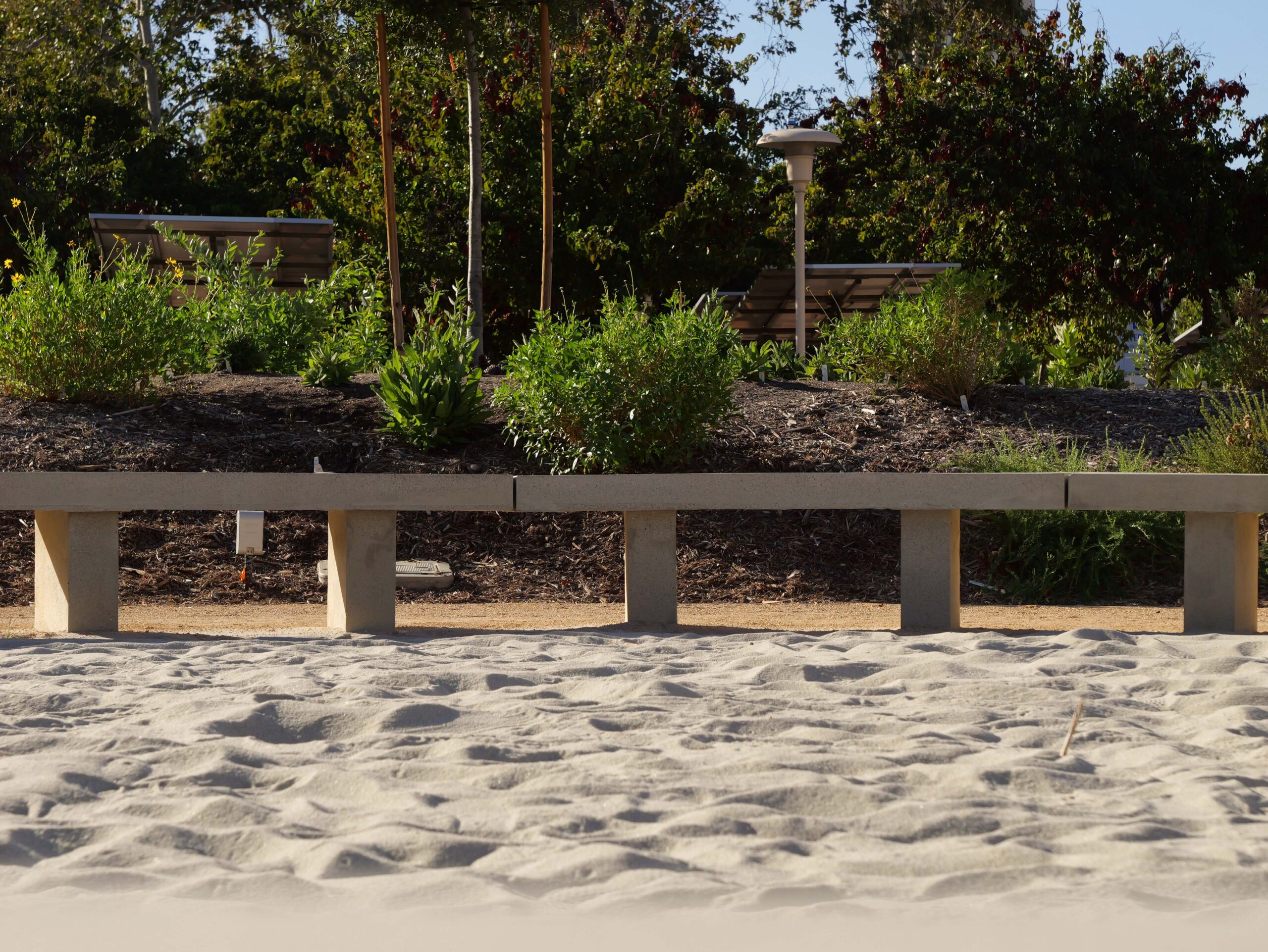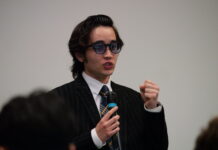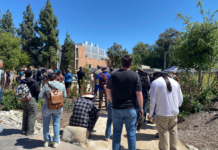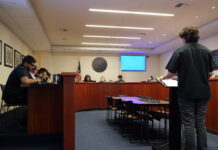After years of planning and preparation, with part of the construction process delayed by the COVID-19 pandemic, the Native American garden opened on campus, across from the HUB in the University of California, Riverside. According to committee members and planners of the project, the purpose of the garden is to honor the area’s Indigenous tribes, the Cahuilla, Tongva, Serrano and Luiseño.
UCR’s campus architect, Jacqueline Norman, expanded on the process behind creating the garden. Once the Native American garden project was established, the first thing that her department, Planning, Development and Construction (PDC) did was to decide where they wanted to locate the site. She elaborated that “We really wanted to identify or find a place on campus that wasn’t tucked away. We have lots of beautiful courtyards that are sort of hidden, tucked away spaces on campus that are surprises when you sort of stumble into them. But we really wanted this project to be somewhere very prominent and public where people will engage with it on a daily basis.”
From that criteria, a location was established. Norman explains that “what more public space do you have than the HUB, which is just adjacent to the Bell Tower. There’s a stream of students and faculty that pass through there on a daily basis, so that seemed like a really ideal space for us.”
The next step of the process was to collaborate with consultant designers and find a firm to work with. Norman explains how they “hired a landscape architecture firm from Seattle called Jones and Jones studio [and was] really excited to be able to have them be the designers of the project, as they were involved in the design for the Museum of the American Indian which is a very large museum in Washington DC.”
After that, Norman continues, a committee had to be established, made up of individuals who understood their commitment to the process from the beginning to the end. One of these committee members was Professor Gerald L. Clarke from the Ethnic Studies Department who is also a member of the Cahuilla Band of Indians. Recalling how he was brought into the project, he commented that “I was contacted about a year ago with this plan of having a native garden here on campus” and that he has “served on the committee with a number of other faculty, administrators and community members to discuss what it might look like, what its uses are and what would be included.”
When asked about the process of working on a committee with others, Clarke says it was a good experience and an opportunity to view different perspectives on issues. He adds on that “oftentimes, [in] initiatives like this, there’s this desire to include Native people and to give Native input. I’m tribal and some of the community people that were involved were tribal as well. And so, I feel like it was done the right way.”
According to Professor Clarke, there were a few challenges that the committee had to overcome and come together to a decision on. “One of the big issues that we had was what plants to include, because many indigenous plants in California, or across the nation are abused by people who are ignorant.”
Professor Clarke expands, saying white sage for instance, is “a sacred plant to us. So we talked a lot in the committee about what to include. We didn’t want people just picking this stuff, killing these plants and using it for trendy purposes. And then what about signage? Do we put signage? Do we put what the uses were, and will that actually contribute to people abusing it?”

Wallace Cleaves, Associate Dean of Undergraduate Education, director of the University Writing Program, and director of the California Center for Native Nations, who is Tongva, was not directly consulted in the planning for the garden, but knew members who did. He explains that “I do know that both Barbara Drake and Julia Bogany, who are also members of the Tongva, both have gone on to the ancestors in the last few years, were consulted [on the garden] in the early stages … I knew [Drake] was being consulted and was talking about which of our plant relatives she thought were really important to have represented here.
“Where [Drake] was consulted, her real goals were to make sure that our plant relatives who were represented, were treated appropriately. There’s a lot of people who are not always great about knowing how to put those plants in relation to the landscape and with each other, and don’t always treat them the way that they need to be treated. So she would really try to help people understand how our plants had to be kind of situated and the kind of care that we gave. In our belief system and our epistemology, it’s really important to understand that we think of the plants and the animals and really even the earth themselves as our relation[s]. So we have this huge responsibility to them because, literally in our beliefs, they are our ancestors.”
Another committee member, Professor Clifford Trafzer, Distinguished Professor of History and Rupert Costo Chair in American Indian Affairs, elaborates on how he felt about the construction of the garden, “It’s a way of returning the gift because the University of California set up their campuses on Indian lands all over the state and also used funds that that were from the federal government. Wherever you go, you’re on Indian land, and UCR has taken a major step by saying, this is the way we recognize that we’re on native land, and that [indigenous people] were here first and that they are still here. That’s important. They didn’t all go away.”
Professor Clarke also offers his view on the topic, stating that “tuition remission, the native garden, the offering of culturally relevant classes, like the query language class, I see all those as part of UCR trying. We have several Native professors that are here now, and to be honest, a lot of my non-native students love it. They love the fact that taking an intro to Native studies classroom. I’d love to take them over there to that garden so they can look at the plants and understand how tribal people were able to survive all these centuries.”







